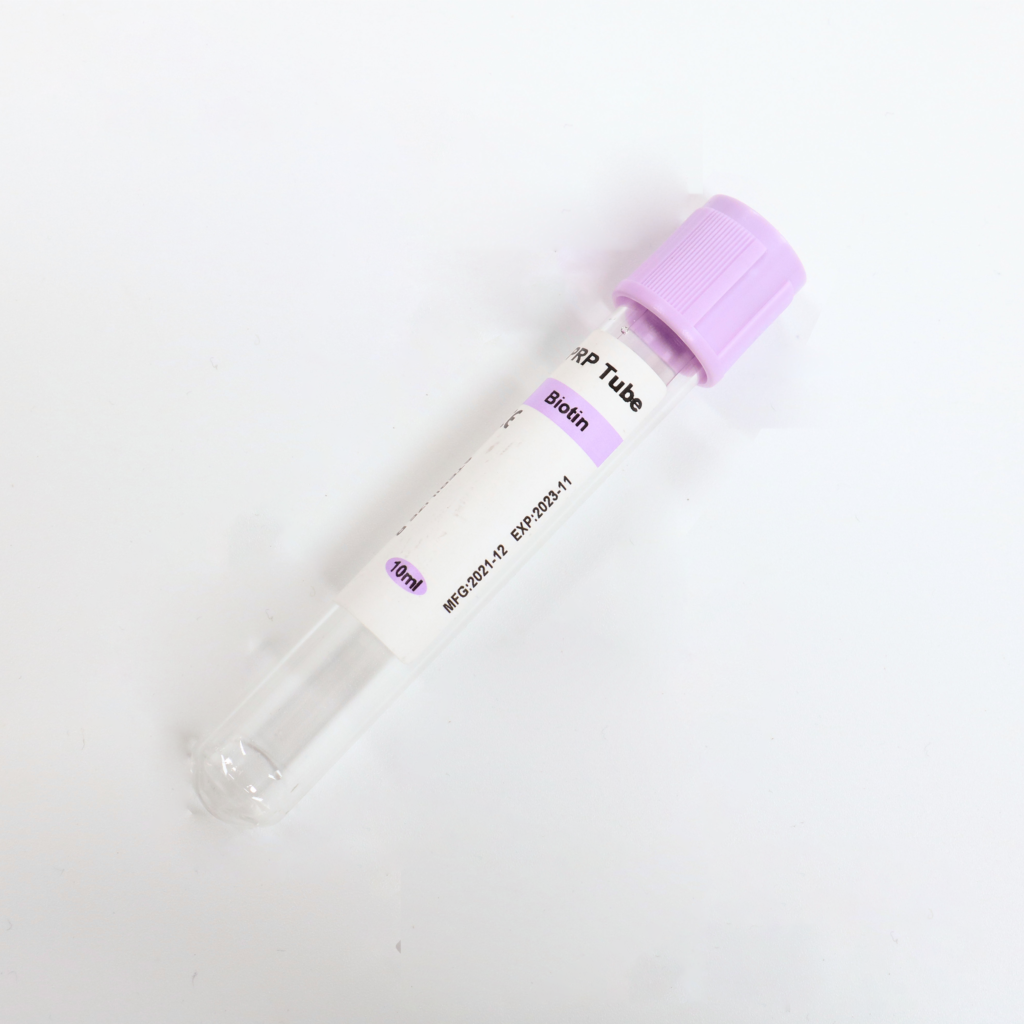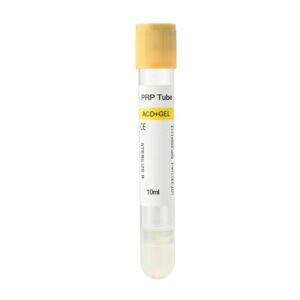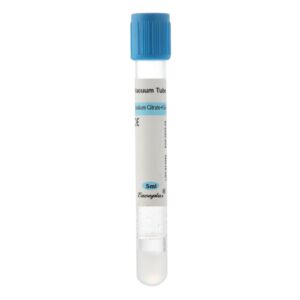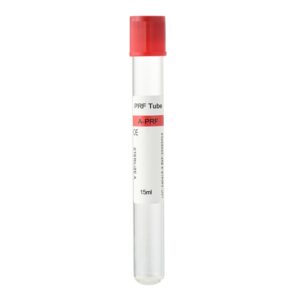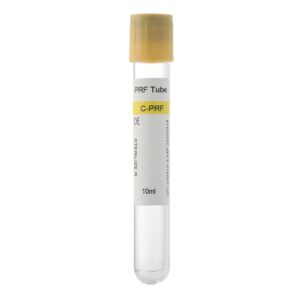What is PRP Treatment for Hair Loss? PRP (Platelet-Rich Plasma) therapy is an increasingly popular treatment in the fields of aesthetics and medicine, especially for hair loss. PRP therapy harnesses the body’s platelets, which are rich in growth factors that promote tissue repair and regeneration. In the context of hair loss treatment, PRP works by stimulating the hair follicles in the scalp, revitalizing them, and promoting new hair growth. Compared to traditional hair loss treatments, PRP is favored for its natural, non-invasive characteristics, making it an attractive option for many patients.
Detailed Process of PRP Treatment for Hair Loss
PRP treatment involves several critical steps, each executed with precision to ensure optimal outcomes:
- Blood Collection:
- Process: The procedure begins with drawing a small amount of blood from the patient’s arm, typically about 20-30 milliliters. This process is similar to a routine blood test and causes minimal discomfort.
- Purpose: The collected blood is used to isolate platelet-rich plasma, which contains a high concentration of growth factors essential for tissue repair and regeneration.
- Centrifugation:
- Process: The blood sample is then placed in a centrifuge, where it is spun at high speeds to separate its components. The blood is typically divided into red blood cells, white blood cells, platelets, and plasma.
- Purpose: The centrifugation process isolates the platelet-rich plasma (PRP), which contains a high concentration of growth factors. These factors are critical for stimulating and revitalizing hair follicles.
- PRP Injection:
- Process: The PRP is injected into the patient’s scalp in the areas affected by hair loss using a fine needle. To minimize discomfort during the injections, a local anesthetic is often applied beforehand.
- Purpose: Once injected, the growth factors in the PRP begin to work on the hair follicles, stimulating cellular regeneration, enhancing follicle function, and promoting the growth of new, thicker hair.
The entire PRP treatment process typically takes about an hour to complete. It is a minimally invasive procedure requiring no hospitalization, and patients can resume their daily activities immediately after treatment.
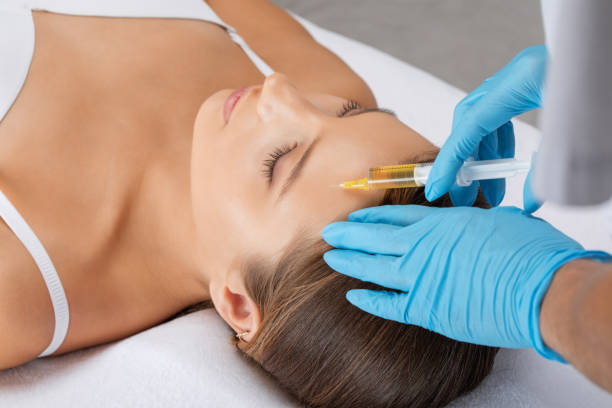
Advantages of PRP Treatment
PRP therapy offers several significant advantages, making it an ideal choice for many individuals dealing with hair loss:
- Natural and Safe: Since PRP utilizes the patient’s blood components, there is virtually no risk of allergic reactions or rejection. This makes it a safer alternative compared to external medications or surgical procedures.
- Non-Invasive: PRP is a non-surgical treatment that does not require incisions or extended recovery periods. The procedure is relatively simple and quick, allowing patients to return to their normal activities immediately.
- Multiple Benefits: PRP not only promotes the growth of new hair but also improves the quality of existing hair, increasing its density and strength. This dual effect makes PRP particularly beneficial for patients with thinning hair who have not yet experienced complete hair loss.
- Broad Applicability: PRP is suitable for treating various types of hair loss, including male and female pattern baldness, as well as other forms of hair loss caused by hormonal, genetic, or environmental factors. It can also be combined with other treatment methods, such as medication or laser therapy, to enhance results.
How Long Does PRP Take to Show Results?
PRP treatment does not yield immediate results, as its effects are based on natural biological processes. Most patients begin to see initial results within 3 to 6 months following treatment. During this period, the growth factors gradually activate dormant hair follicles, prompting them to resume their growth functions.
- Initial Effects: In the first month, patients may notice a decrease in the rate of hair loss, indicating that the PRP is starting to take effect.
- Visible Results: By the third month, many patients begin to see new hair growth and increased hair density.
- Optimal Results: Between six months and one year, the effects of PRP treatment typically peak, with patients observing significantly thicker and denser hair.
It is important to note that individual responses to PRP treatment can vary based on factors such as the patient’s condition and the severity of hair loss. Patience and regular follow-up appointments are essential to achieving the best results.
Duration of PRP Treatment Effects
The effects of PRP treatment are long-lasting but not permanent. Generally, the results can last for 12 to 18 months. During this time, the hair follicles remain active, continuing to produce new hair.
To extend the benefits of PRP treatment, physicians often recommend maintenance sessions. Typically, one to two maintenance treatments per year can help maintain hair density and prevent further hair loss.
- Importance of Maintenance: Regular maintenance treatments help sustain follicular activity and prevent hair from thinning or falling out again.
- Personalized Treatment Plans: Each patient’s hair loss condition is unique, and physicians will develop personalized maintenance plans to ensure the best long-term results.
Post-Treatment Care for PRP Therapy
To ensure the effectiveness and safety of PRP treatment, patients should adhere to the following post-treatment guidelines:
- Avoid Using Irritating Hair Products:
- For the first 24 hours after treatment, patients should avoid using any hair care products that contain harsh chemicals, such as shampoos, conditioners, or hair dyes. These products can irritate the treated scalp and potentially interfere with the PRP’s effects.
- Protect the Scalp from Sun Exposure:
- The scalp may be more sensitive after PRP treatment, so it is advisable to avoid direct sun exposure immediately following the procedure. Wearing a wide-brimmed hat or using a protective sunscreen can help safeguard the scalp.
- Avoid Strenuous Activities:
- Patients should refrain from engaging in strenuous physical activities or anything that might cause excessive sweating on the scalp for 48 hours post-treatment. Sweat can affect the healing process and increase the risk of infection.
- Follow the Physician’s Specific Instructions:
- Physicians may recommend the use of topical medications or supplements to support the treatment’s effects. It is crucial to follow these instructions precisely and attend regular follow-up appointments to maximize the treatment’s benefits.
- Avoid Using Hair Dryers:
- The treated scalp is sensitive to heat, so it is recommended to avoid using hair dryers, particularly in high-heat settings, as this could potentially damage the scalp.
- Gentle Scalp Massage:
- If approved by the physician, gentle scalp massages can promote blood circulation, aiding in the absorption and effectiveness of the PRP. However, this should be done a few days post-treatment to avoid overstimulating the scalp.
Conclusion
PRP therapy for hair loss is a safe, natural, and effective non-surgical treatment option. By utilizing the body’s resources, PRP stimulates hair follicles, promoting the growth of new hair and improving the health of existing hair. While PRP requires some time to show results and may need regular maintenance, its numerous advantages make it an ideal choice for many individuals dealing with hair loss. Consulting with a qualified physician to understand the treatment process, expected outcomes, and necessary precautions can help patients achieve the best possible results and regain their confidence.

